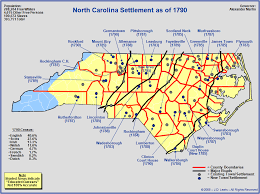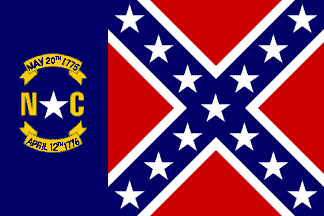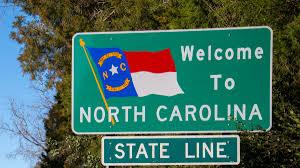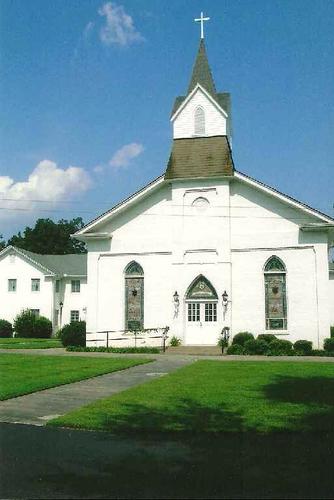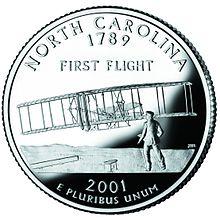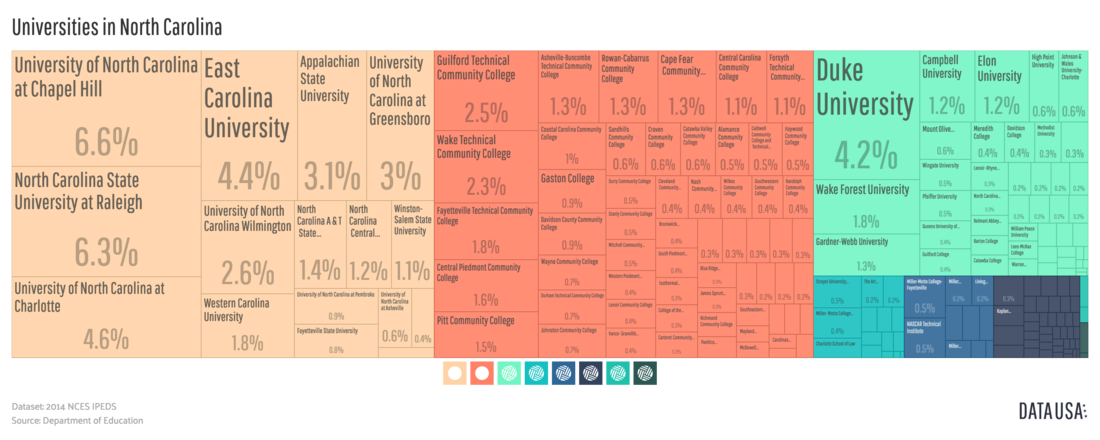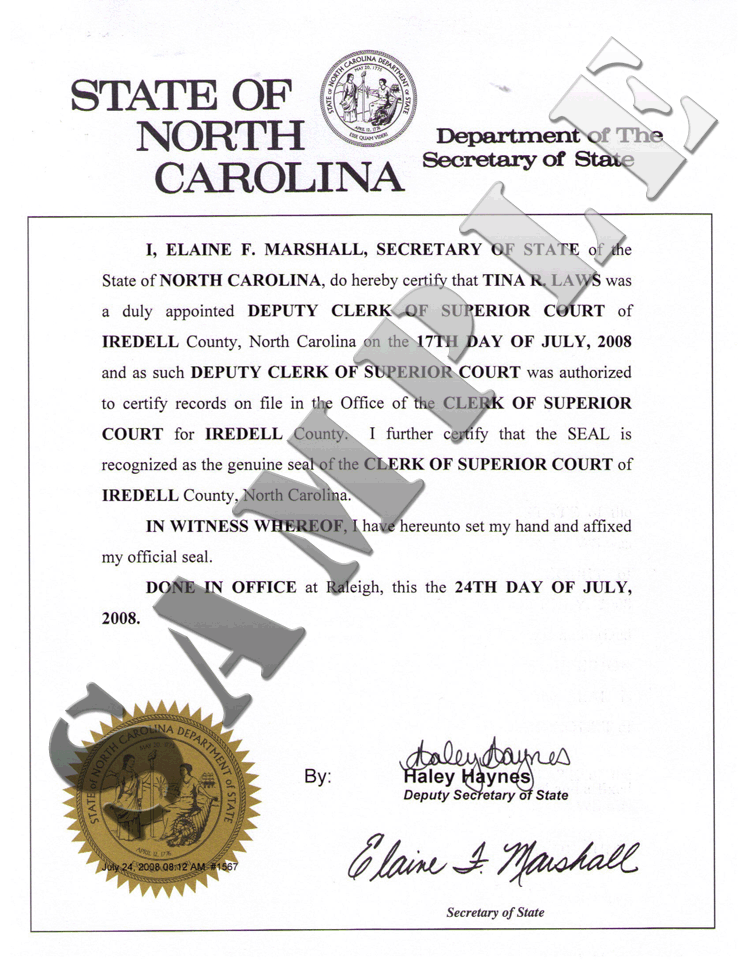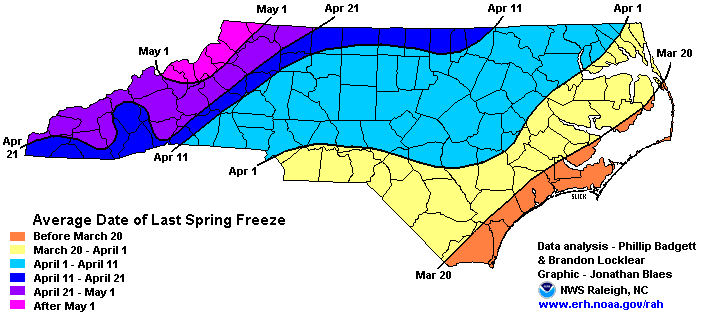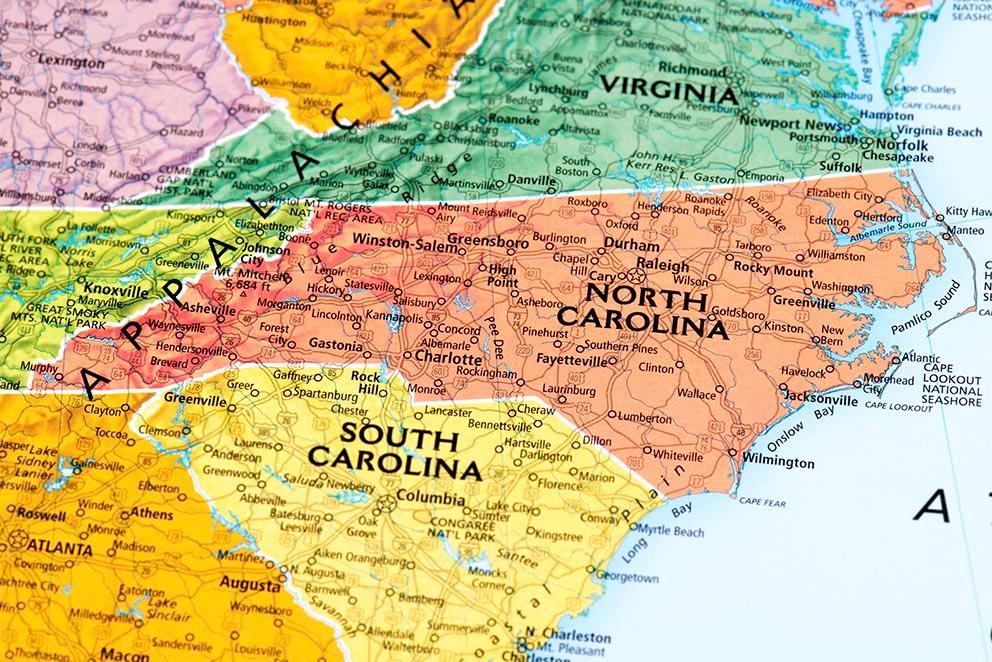
North Carolina was located below Virginia and above South Carolina. Carolina is a word derived from the Latin name for Charles, 'Carolus'. The first settlement in the North Carolina region occurred in 1587. One of these settler's named John White was the father of the first English baby born in the New World.



